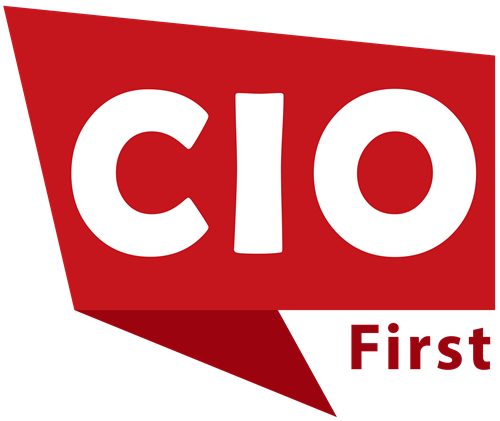Both the development team and the operations team must work together to create and improve software, but there haven’t always been the best results when these two departments coordinate. DevOps has therefore emerged as a crucial approach and culture for software development. By physically or virtually merging the operations and development divisions into a single, responsive team, DevOps dismantles information silos and contributes to quicker, more efficient product delivery. The more professionals collaborate and prioritize continuous integration and continuous delivery (CI/CD), the more efficiently projects are created, tested, and produced.
Given that DevOps is an efficiency-focused discipline, the next obvious step is DevOps automation. Scalable DevOps approaches are based on automation. High-performing DevOps teams demonstrate how automation lowers complexity while driving growth by deploying software up to 200 times more frequently and recovering from failures 24 times faster than low-performing teams.
Let’s talk about DevOps automation’s specifics and how it’s simplifying things for scalable expansion.
What is DevOps Automation?

A collection of tools and technology known as DevOps automation carries out repetitive, everyday operations that engineers would typically complete by hand. Software development and operations teams can work together more effectively and constantly improve the way they design, construct, test, deploy, deliver, and monitor software applications by automating tasks throughout the SDLC. Increasing cross-team cooperation and automating tedious manual work are the two main objectives of automating DevOps.
By eliminating bottlenecks and human mistakes, DevOps automation tools shorten and eliminate feedback loops, which accelerates delivery cycles. From the most recent code added to a repository to the ultimate release and delivery of an application or service upgrade, this enhanced efficiency is applicable.
With Kubernetes, containers, and microservices architecture, this continuous deployment and incremental software development methodology develops and is further improved.
Which DevOps Procedures are Amenable to Automation?
With so many phases and procedures, DevOps can be a complicated approach. Because DevOps brings together several departments, there is a very significant chance that many of the established processes may differ from team to team, which could be even more difficult.
However, it is usually not possible to automate every step. Therefore, a crucial initial step in DevOps automation is deciding what can be automated and what should be automated. On the other hand, automating wherever possible is a well-known DevOps principle. You can better utilize DevOps automation and streamline your process without going overboard if you know where to concentrate your efforts. When automated, the following DevOps stages could offer the biggest benefits:
1. Planning
DevOps teams must comprehend the product or feature’s requirements and business/application goals throughout the planning stage. Knowing the metrics, you will use to gauge performance and success is crucial because the product will have a lot of requirements and be working within a release schedule. As you establish your development strategy, input from customers, stakeholders, and other important parties should all have an impact on this.
At this point, automation makes it easier to monitor KPIs and measurements and collect critical input without requiring a significant investment of time and resources.
2. Coding
From the planning stage, developers and engineers will carry out a project, at least in terms of configuration artifacts and/or coding. This is accomplished through the use of a source code repository, which houses several code versions and allows code to be checked in, reviewed, and modified.
DevOps automation can be used to help in code generation in addition to automatically compiling code, storing it in version control, deploying it into testing environments, and ultimately releasing it to end users.
3. Building
In this subsequent stage, the code is extracted from the source code repository and assembled into executable artifacts. To make sure the executed code is adequate and ready for deployment, automated tests are carried out. Before a team approves the product for release, metrics are also used to assess the code’s quality, performance, build performance, and other factors.
Automation is particularly helpful during the building stage since it can automate and standardize a lot of measurement, regression testing, and continuous integration.
4. Testing
Another procedure, known as software verification, is devoted to evaluating the software product or functionality. Ensuring the quality of software features for production, deployment, etc., is facilitated by software verification.
Security and vulnerability analysis, configuration testing, acceptance and regression testing, unit testing, and performance measurement are all used in software testing and validation activities. These processes are frequently automated with the aid of tools and apps. To ensure that developers are aware that the code is working correctly and can promptly fix any problems that are discovered, automated self-testing is a routine procedure for every build.
5. Release and Deployment
The DevOps team can release the new feature or product after all the testing and building is finished. The team can package the release using package configuration procedures through a procedure called staging. Higher-ups will probably also need to approve the release before it can be made public, making sure that any input from managers or executives is taken into account. The use of tools like package management software automates this process.
Iterative software deployment is the foundation of DevOps, therefore, updates must be promptly and often pushed into user contexts. Coordinating all pertinent releases and making sure backups are ready in case of a system breakdown are necessary for this. The simplest method to guarantee the safe and efficient deployment of updates is to automate timed releases or schedules.
6. Monitor and Operate
The software product should undergo rigorous performance and security monitoring following each release. The IT infrastructure must continue to be safe and efficient, and by using metrics and monitoring to understand user experience, software features can be improved for future use. Once more, tracking and reporting automations assist developers in staying aware of user wants and product performance.
7. Governance
Governance procedures support information security, change management, and audit compliance, enabling DevOps teams to maintain production speed in the face of almost continual change. Automated governance systems protect DevOps from non-compliance, harmful shortcuts, and bottlenecks without compromising job quality.
Lastly, each of these automations needs to be able to work simultaneously as various features or builds progress through the process, as DevOps is an iterative technique.
Why is DevOps Automation Important?

Using DevOps automation has various advantages, but some of the most prominent ones are increased speed, scalability, and consistency, which we observe manifest in the following ways:
● Encourages Interactions and Collaboration
By automating processes, team members can delegate regular and repetitive activities to reliable automated systems, freeing them up to concentrate on more strategic and collaborative work.
● Boosts Output
Automation frees up developers’ time so they can concentrate on coding details and create their finest work. This improves output and raises developer satisfaction. Automation increases resilience in addition to speed. DevOps-using companies report 96% faster recovery times and 5× reduced failure rates, demonstrating how automation improves system stability while lowering operational risks.
● Simplifies Processes
Software development involves numerous manufacturing and quality-assurance phases. In addition to creating more uniform, simple processes, automation lets the team execute observability and improvement techniques to ease some of that burden.
● Quicker Fixes
Declarative configuration management and automation work together to enhance systems and procedures. DevOps stage automation results in a much shorter time to deployment, which raises customer satisfaction.
● Increased Capacity
All sectors today face the problem of working at scale, but DevOps teams in particular face this challenge as they manage numerous apps and deployment environments. Accurately and effectively handling different operations is no problem for automated systems. Additionally, these same systems scale readily without sacrificing performance as demand changes.
● Minimizes Human Errors
Although humans are incredibly creative and innovative, we occasionally lag behind in precision, especially when it comes to repetitive jobs. However, even minor errors can result in major issues in the intricate realm of software development. At crucial stages of the DevOps process, automation minimizes the human factor, removing the possibility of human error and guaranteeing accuracy all along the way.
Also Read: Natural Language Querying: How Talking to Your Data is Changing AI for Business Leaders
Best DevOps Automation Practices
As you integrate your toolchain and pipeline, working together with engineers is one of the best methods to successfully adopt automation on your DevOps team. Take into account these recommended practices while developing your plan for DevOps automation:
Put CI/CD first
CI/CD is the primary element that most DevOps teams believe has to be automated in a company. Several essential components of CI/CD, including builds and the deployment of packaged apps in the appropriate production environment, can be handled by automation.
Continuous integration (CI)
This procedure makes sure that every modification is tested and assists users in determining whether the changes affect the environment in any way.
Continuous delivery (CD)
DevOps teams utilize this technique to create software that enables them to launch a successful release candidate into production whenever they want.
Constant Deployment
Every successful change is automatically sent to production in this procedure, which elevates continuous delivery to a new level and is particularly useful for operating at scale.
These processes’ automation guarantees automation control, promotes engineer collaboration, and ensures that upgrades and new features are routinely applied.
Don’t Overlook Change Management
Any effective DevOps plan must include regular upgrades and the rollout of new features. They can also be one of the hardest things to stay on top of. Change management is therefore a crucial component of DevOps automation. Configuration management, version control, and change control all aid in facilitating code modifications and providing great control over deployments. When done correctly, change management serves as a digital record and safety net, describing the path your software has followed and enabling you to return to earlier stages of that path when necessary.
Work Closely with Engineers
As said before, DevOps should attempt to automate whenever feasible; however, this does not imply that automation can take over the process on its own. Engineers are crucial and should never be undervalued in situations where human intervention is needed or an automated process necessitates an extra level of evaluation.
Continue to Observe
Lastly, software monitoring and updating are made much easier by automation, which increases the effectiveness and efficiency of debugging, patching, feature enhancements, troubleshooting, and other possible security measures. Therefore, a key component of your continuous plan should include continuous automated monitoring of deployed assets. Automating the following DevOps monitoring principles is especially effective:
- Logging
- Monitoring
- Alerting
- Tracing
- Auditing
Final Thoughts
So, how can one begin automating DevOps? DevOps automation does not have a standardized methodology. Self-service observability and monitoring-as-code techniques are two of the many methods that organizations can promote automation, observability, self-healing, and vulnerability management throughout the SDLC. With a few clicks using these techniques, development and IT operations teams can incorporate feedback loops into their apps. Furthermore, integrating AIOps into any cloud adoption plan is essential to advancing innovation.
























